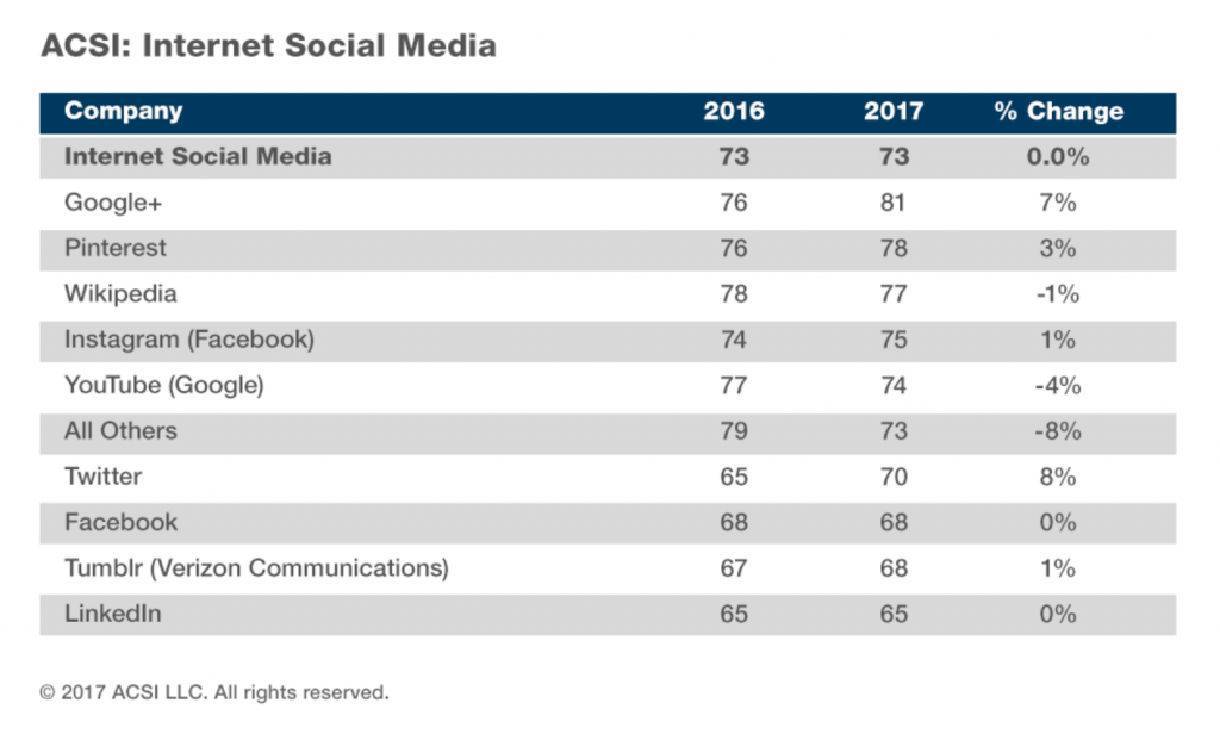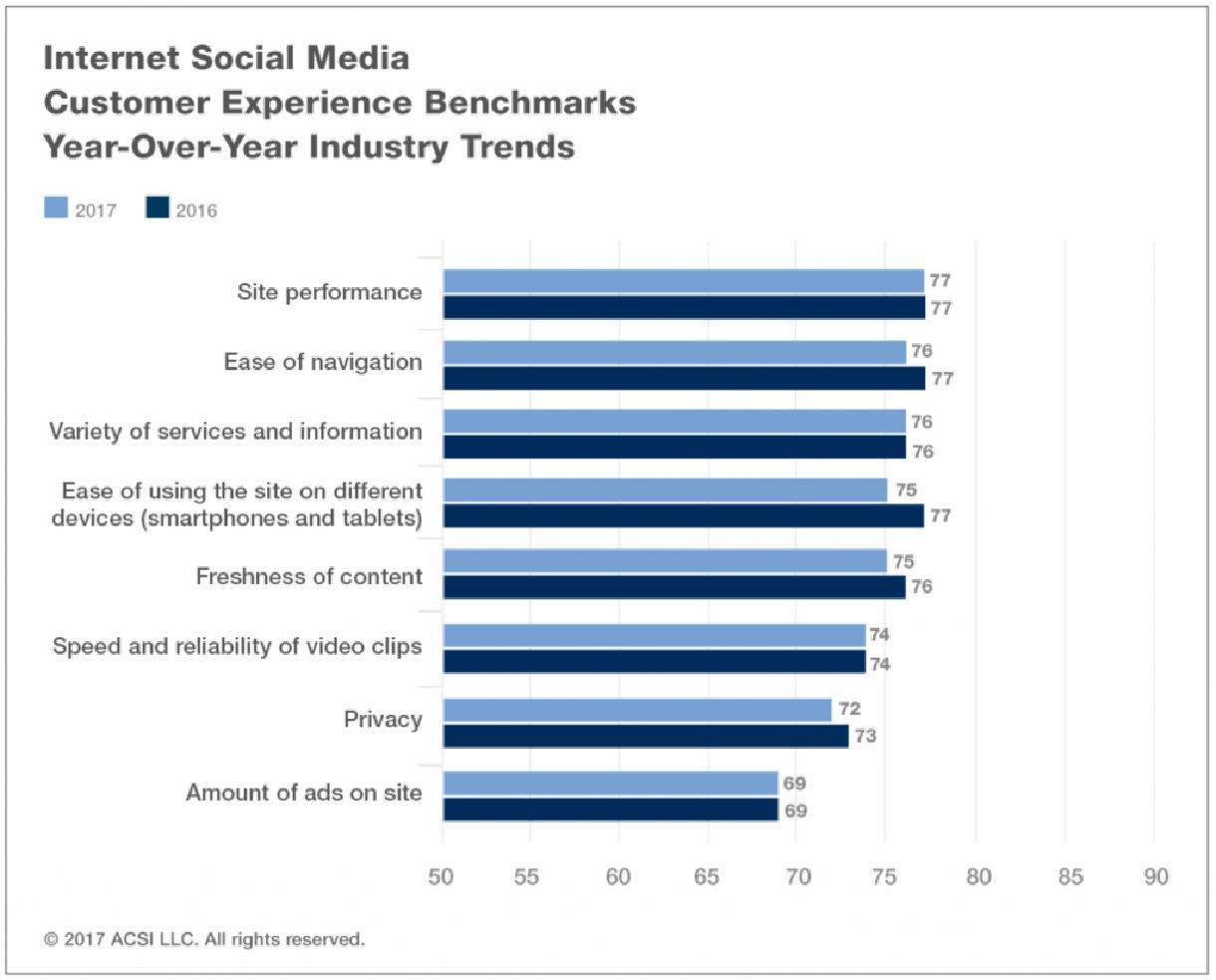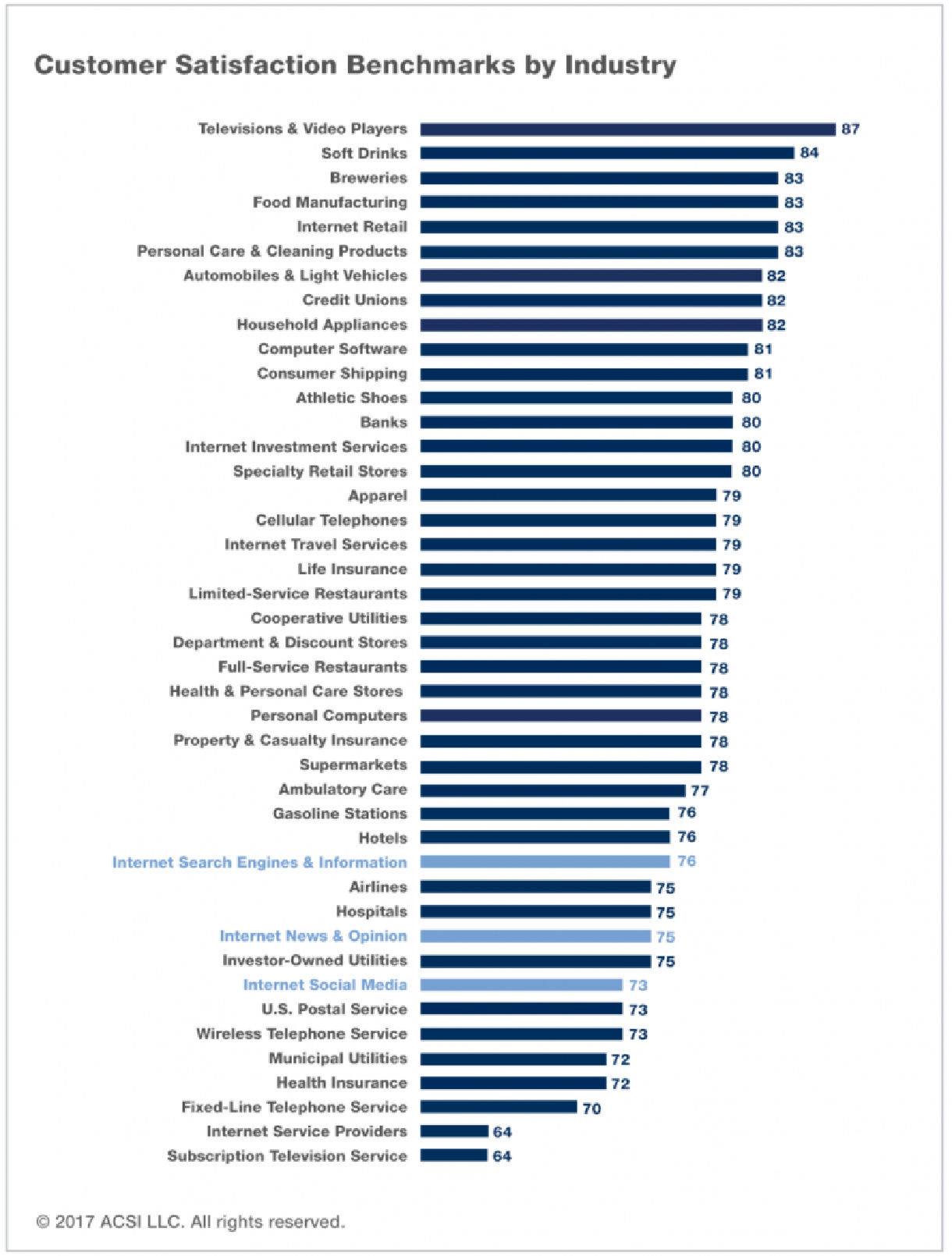Last week, the American Customer Satisfaction Index (ACSI) released a report on customers’ satisfaction with three critical online industries: internet social media, internet search engines, and internet news & opinion. The report shows internet users’ change in satisfaction with three of the most used internet spaces.
Four Key Takeaways
Twitter is making a comeback (maybe).
The overall satisfaction index for internet social media remained unchanged from last year, but specific social networks saw significant changes. Foremost among those was Twitter, who saw an 8% improvement in overall satisfaction. In 2017, seventy percent of internet users were satisfied with Twitter.

Twitter has had plenty of criticism the past three years and has seen stalled subscriber growth, but signs like this point to it possibly finding a niche where it can thrive. Technology, finance, and healthcare all continue to have engaged industry niches on Twitter.
People still hate social media ads.
The amount of ads on a website continue to be the area where consumers are least satisfied with social media. They rank their satisfaction with social media ads lower than privacy, despite near-continuous uproar about these companies’ data collection policies.
What does it mean? Ads aren’t going away. They’re (one of) the few ways to keep platforms like Facebook and Pinterest free to use. Still, it’s important to keep in mind that your ads might have an adverse effect than intended.

Customers don’t like ads that are irrelevant to them, annoying, or spammy. Make your social ads valuable:
- Target them to the right users – your ad content should be tailored to the users who will see it. Targeted groups not only allow you to have better-performing ads, they also can help you improve the overall ROI of your marketing efforts.
- Maintain consistent quality – use quality photos and videos. If an ad “looks” cheap, users are more likely to be turned off by it.
- Keep an eye on spend and size of target – if your spend is high and the size of your targeted group is low, users are likely to see your ad with high frequency. Seeing the same ad over and over is frustrating to users.
Mobile is even more important to internet users.
The report points out that “search engine and information apps rate much lower than they did a year ago [for mobile compatibility.]” As mobile usage continues to grow, internet users expect their experience on their phones to improve.
Websites that truly think “mobile-first” stand to make an impact. Mobile-first is more than a site that loads well and looks good on an iPhone. The sites that truly embrace a mobile-first philosophy think about user flow, content length and structure, and navigation with mobile users in mind.
People aren’t very satisfied with social media.
Overall, internet users aren’t very satisfied with social media. Social media networks only score a 73 on the ACSI’s index, well behind airlines and banks.

They may be unhappy, but they’re still using it. A quality social media strategy that provides value instead of clutter will stand out to unhappy users on social media.

